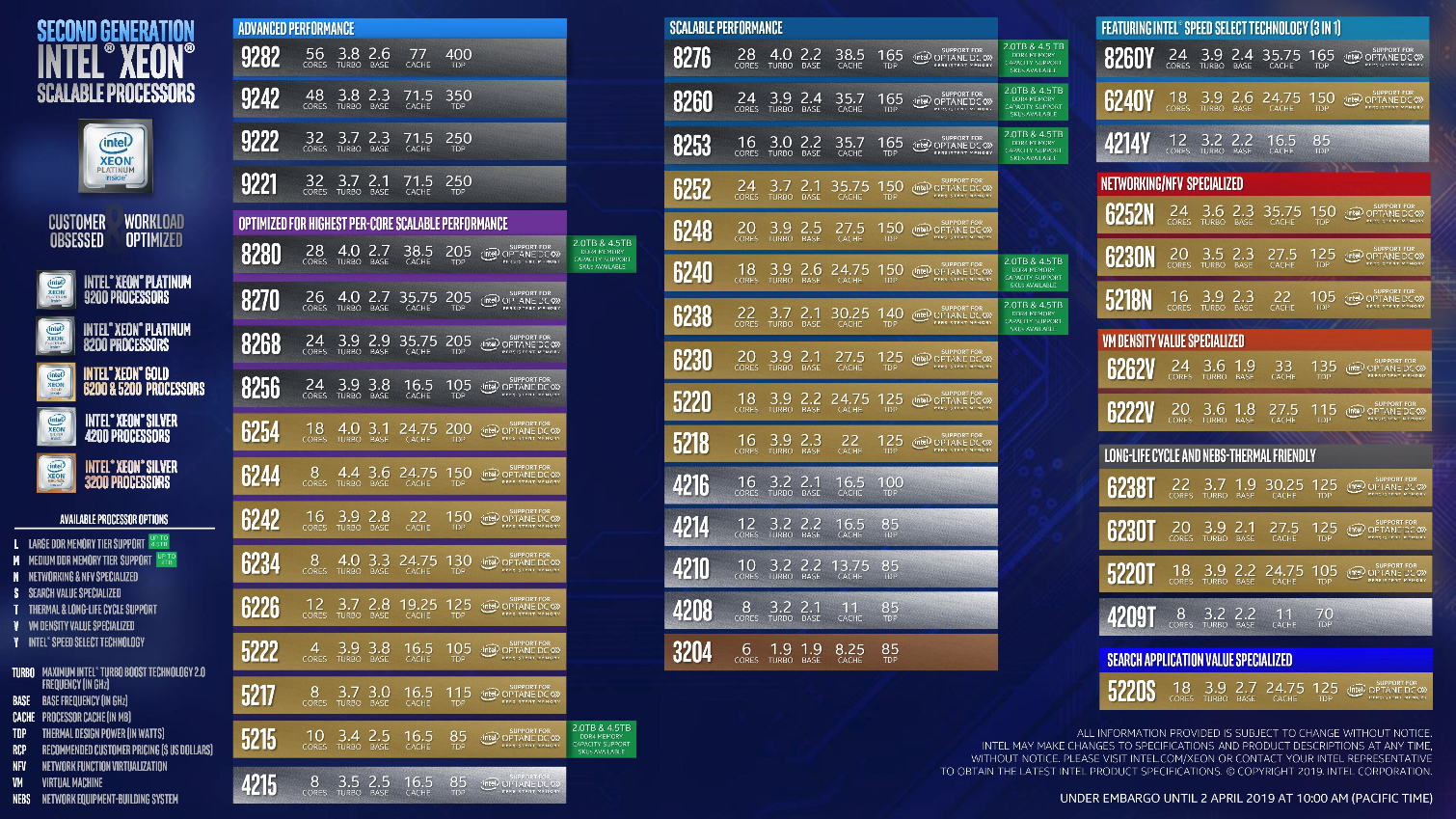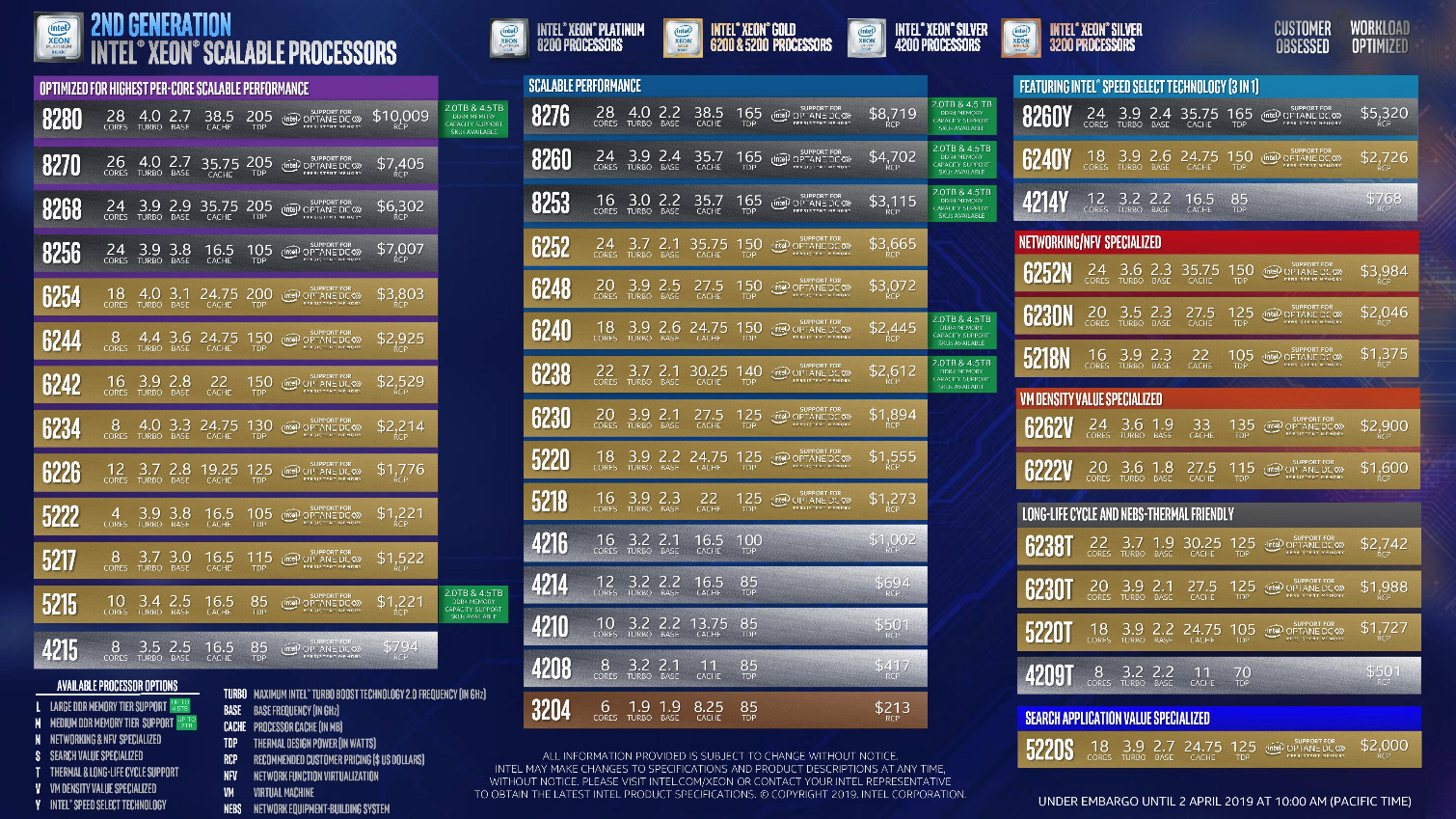Intel Cascade Lake Xeon Platinum 8280, 8268, and Gold 6230 Review: Taking The Fight to EPYC
Why you can trust Tom's Hardware
Silicon Mitigations, Product Stack and Turbo Boost Frequencies
Silicon-Based Mitigations
Cascade Lake represents Intel's first data center processors with in-silicon mitigations for the Meltdown and Spectre vulnerabilities. Existing software-based patches result in reduced performance that varies based on workload. Newer mitigations baked directly into the CPUs should help soften that impact, even though the company still uses a combination of firmware and software mitigations to protect against some vulnerabilities.
Intel will continue to use operating system (OS) and virtual machine manager (VMM) patches to tackle Variant 1, which is one of two flavors of Spectre. Cascade Lake addresses Spectre Variant 2 with a combination of in-silicon fixes and OS/VMM patches. Variant 3a and Variant 4 are newer vulnerabilities that will continue to require firmware and OS/VMM patches.
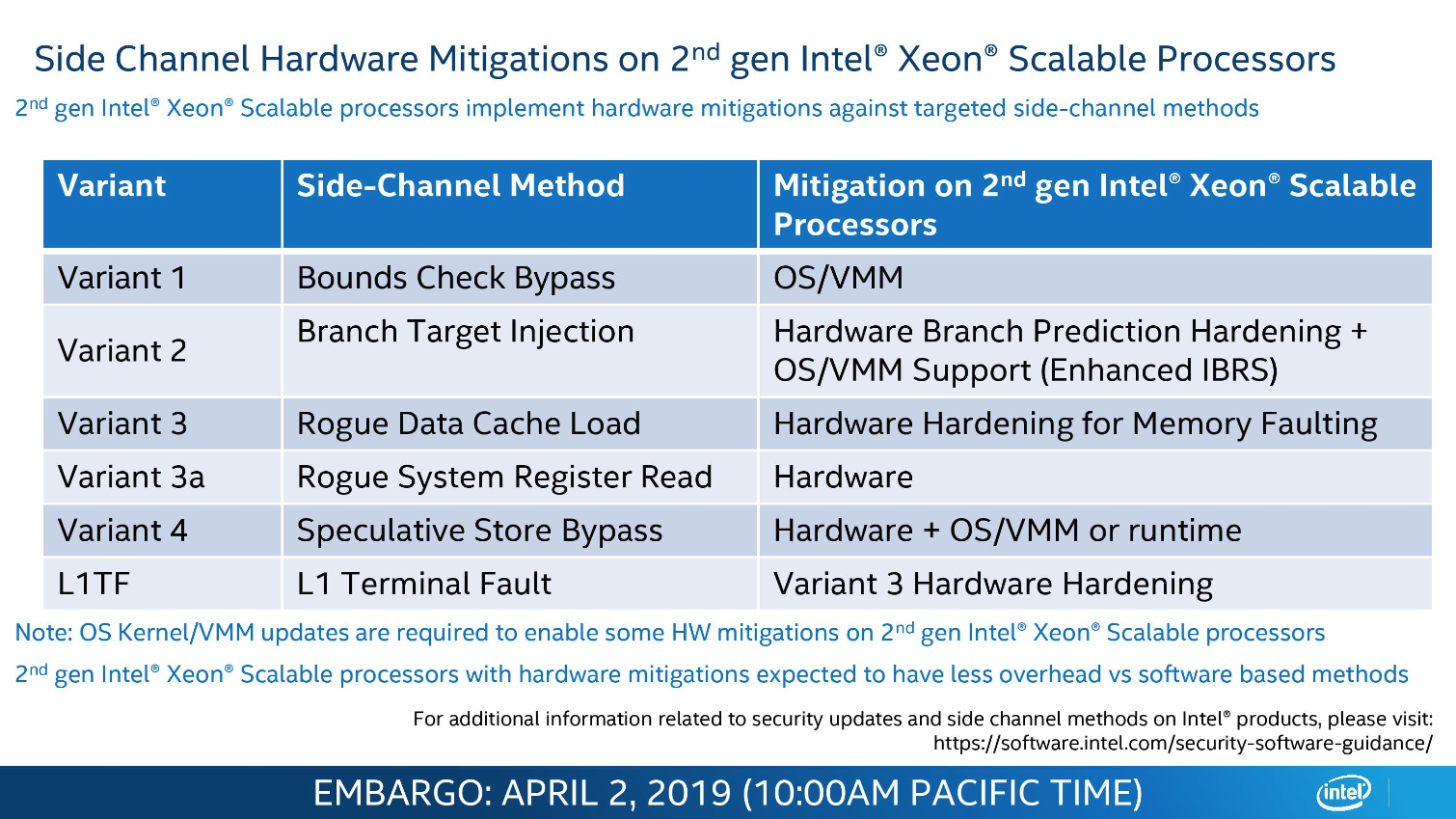
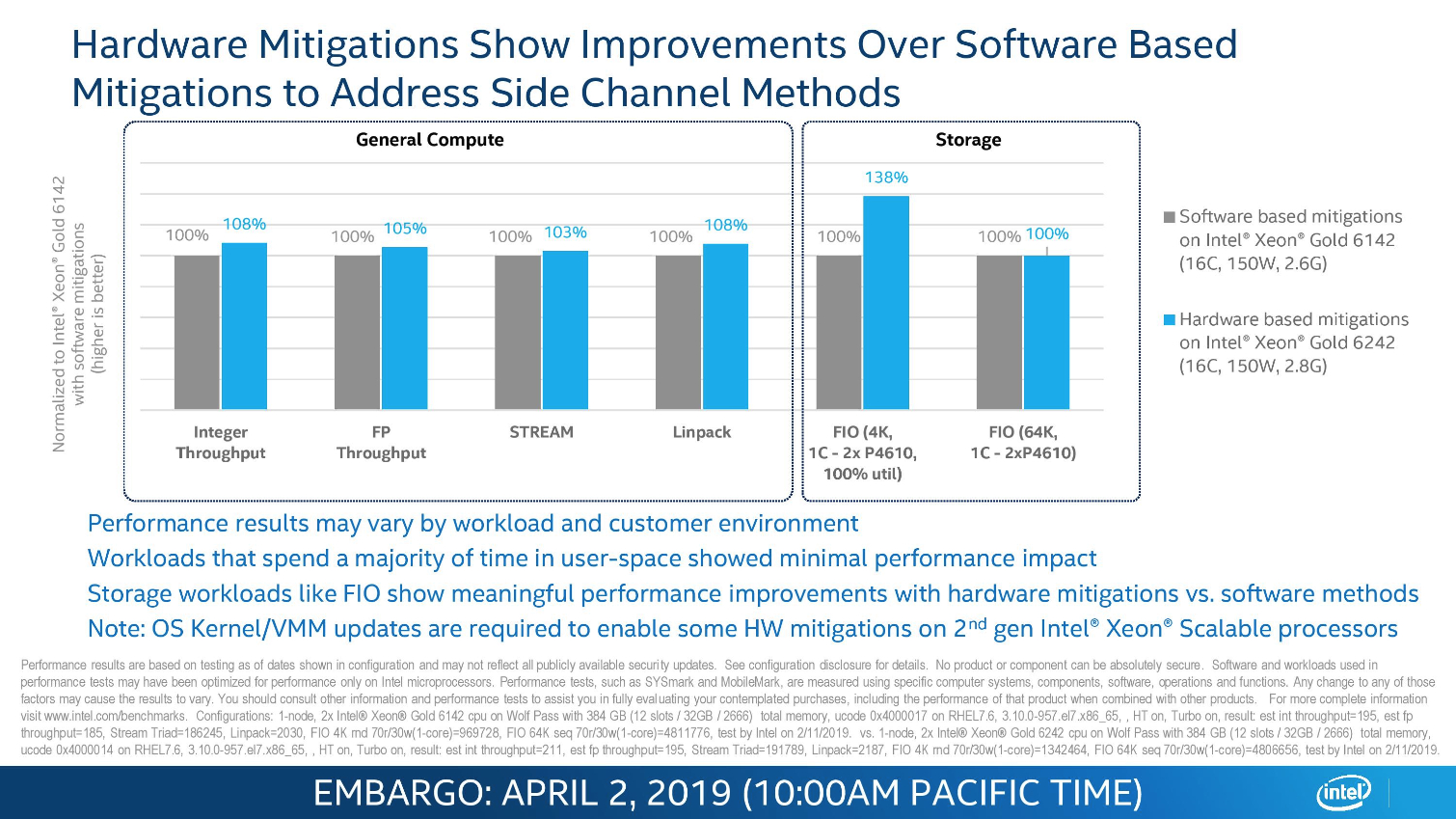
Variant 3, otherwise known as Meltdown, is the only vulnerability addressed entirely in silicon. The performance overhead of the existing combination of Spectre and Meltdown patches can range as high as 10% for some enterprise workloads, with storage accesses suffering even larger losses under certain scenarios. Naturally, then, in-silicon fixes are particularly attractive to Intel's data center customers.
The Cascade Lake Product Stack
Intel carves its product stack into Platinum, Gold, Silver, and Bronze categories. The Cascade Lake-AP processors that span up to 56 cores slot in as the ultimate tier of performance for the Platinum category.

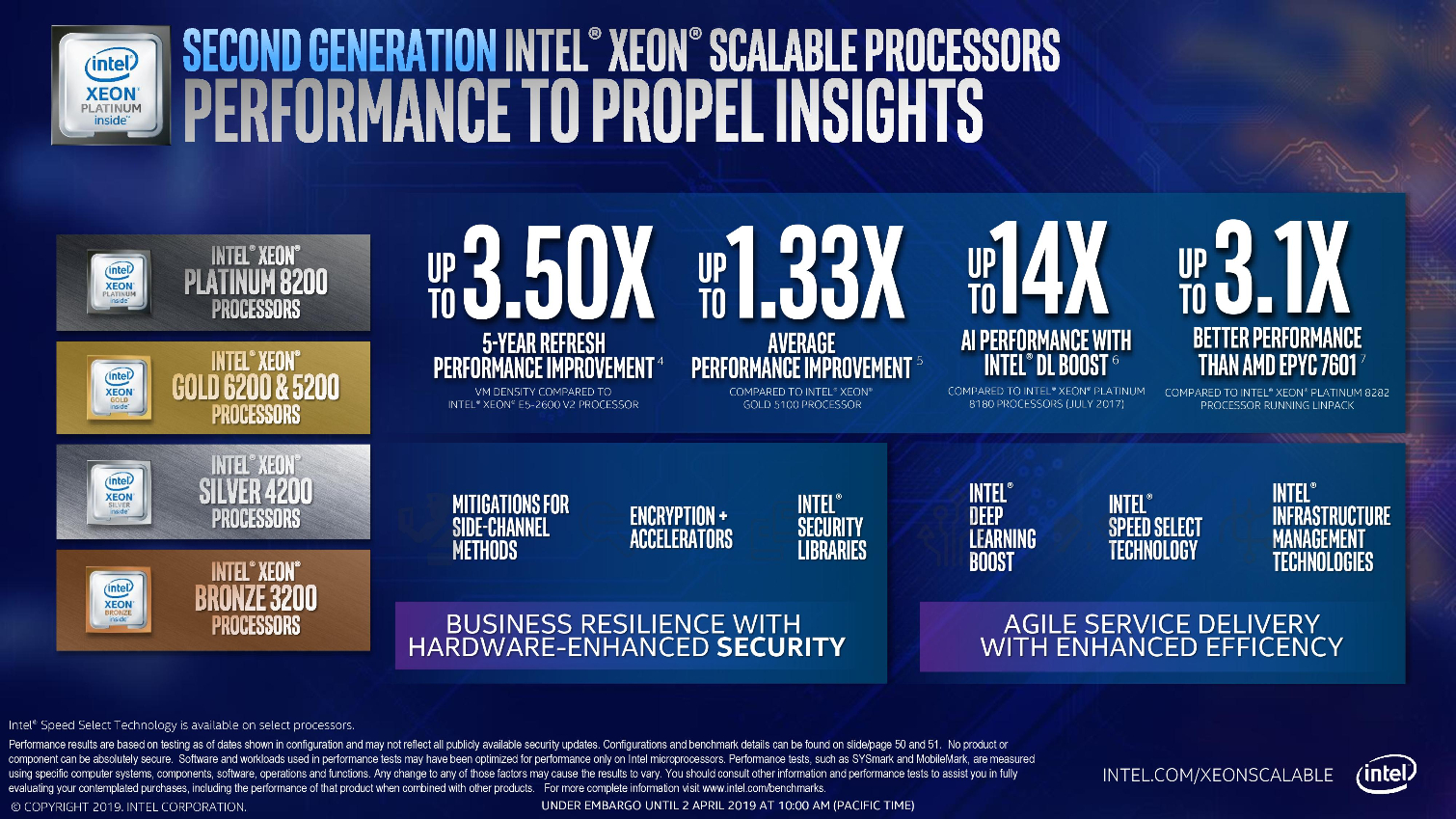
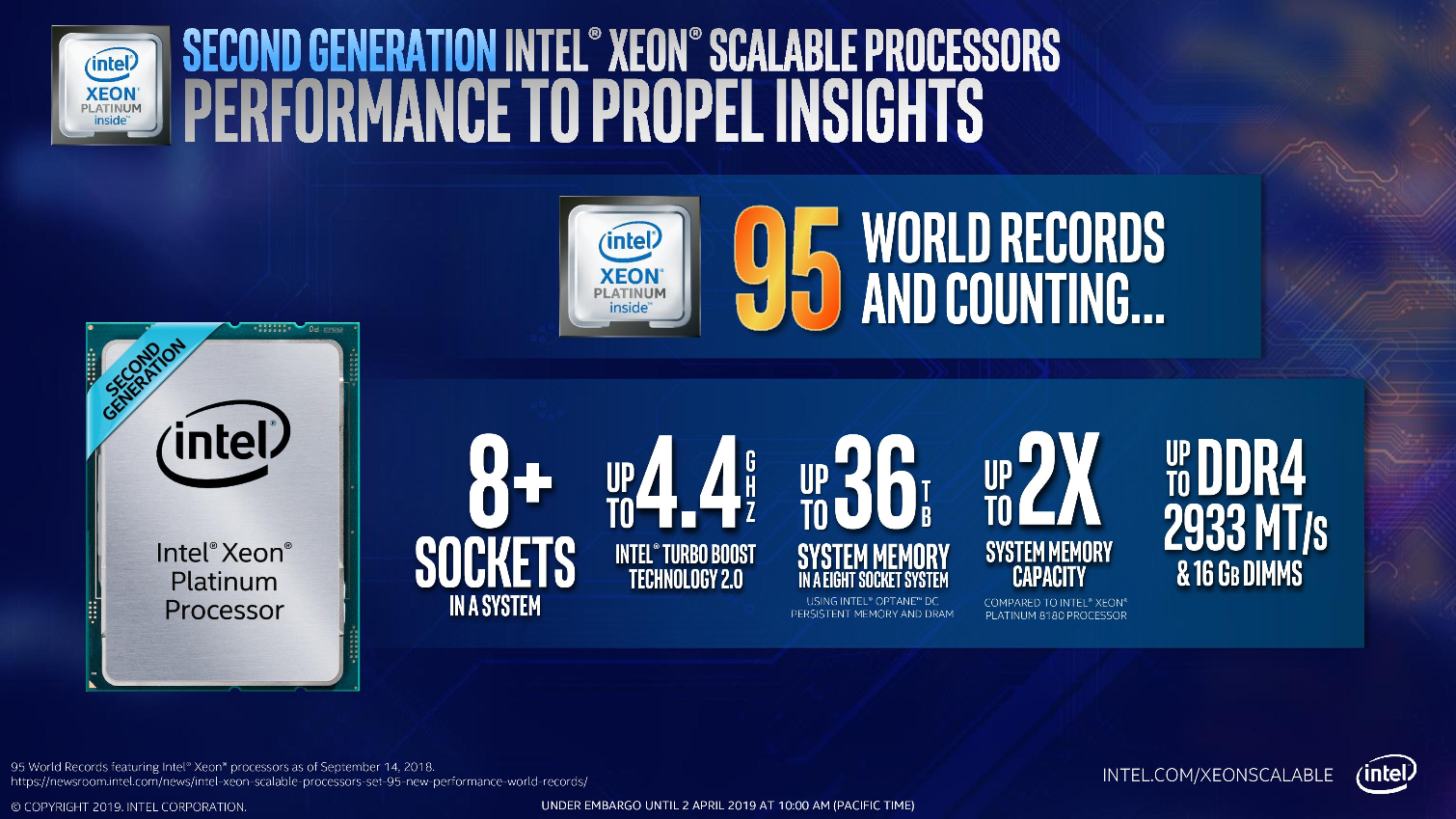
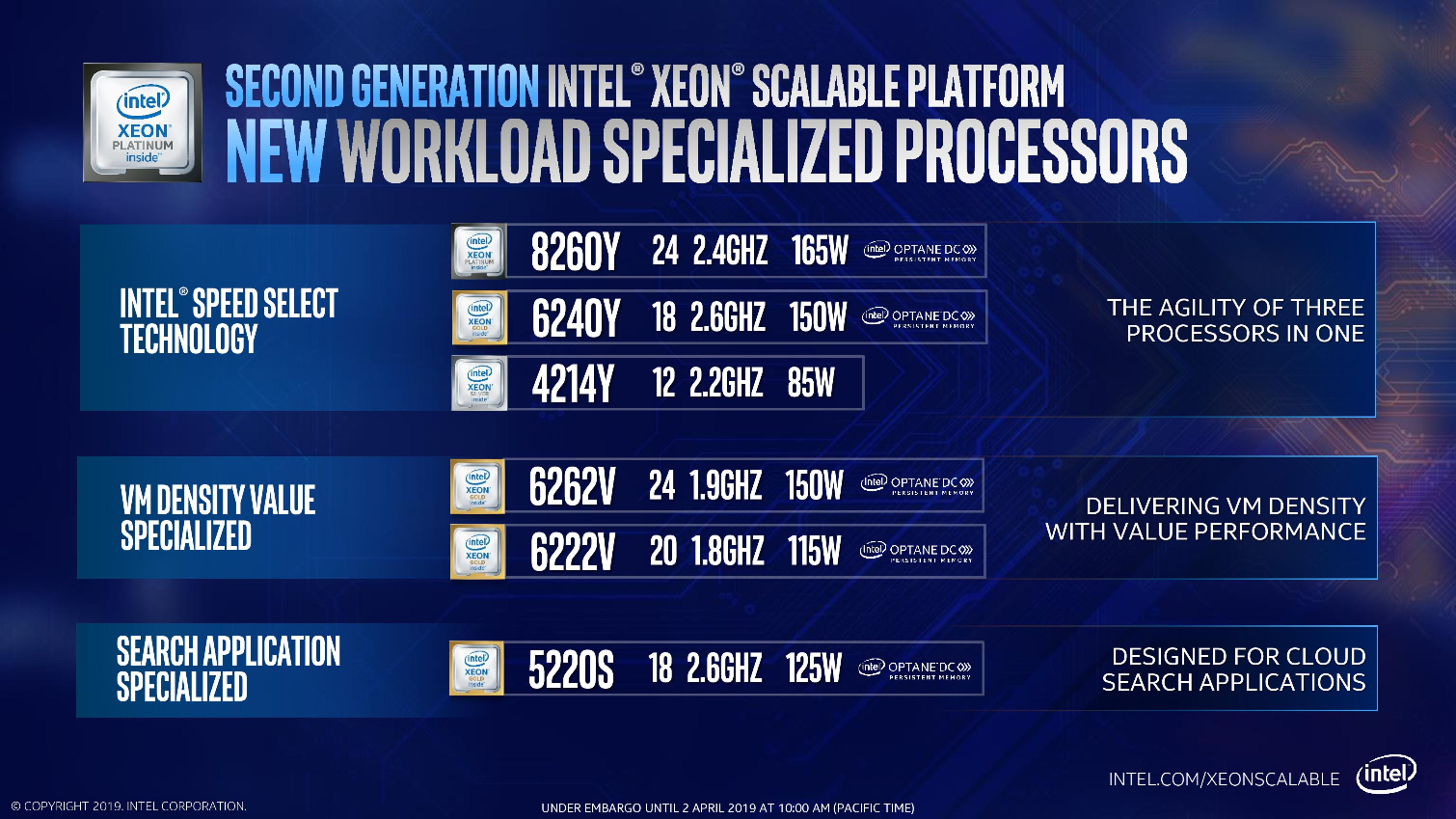

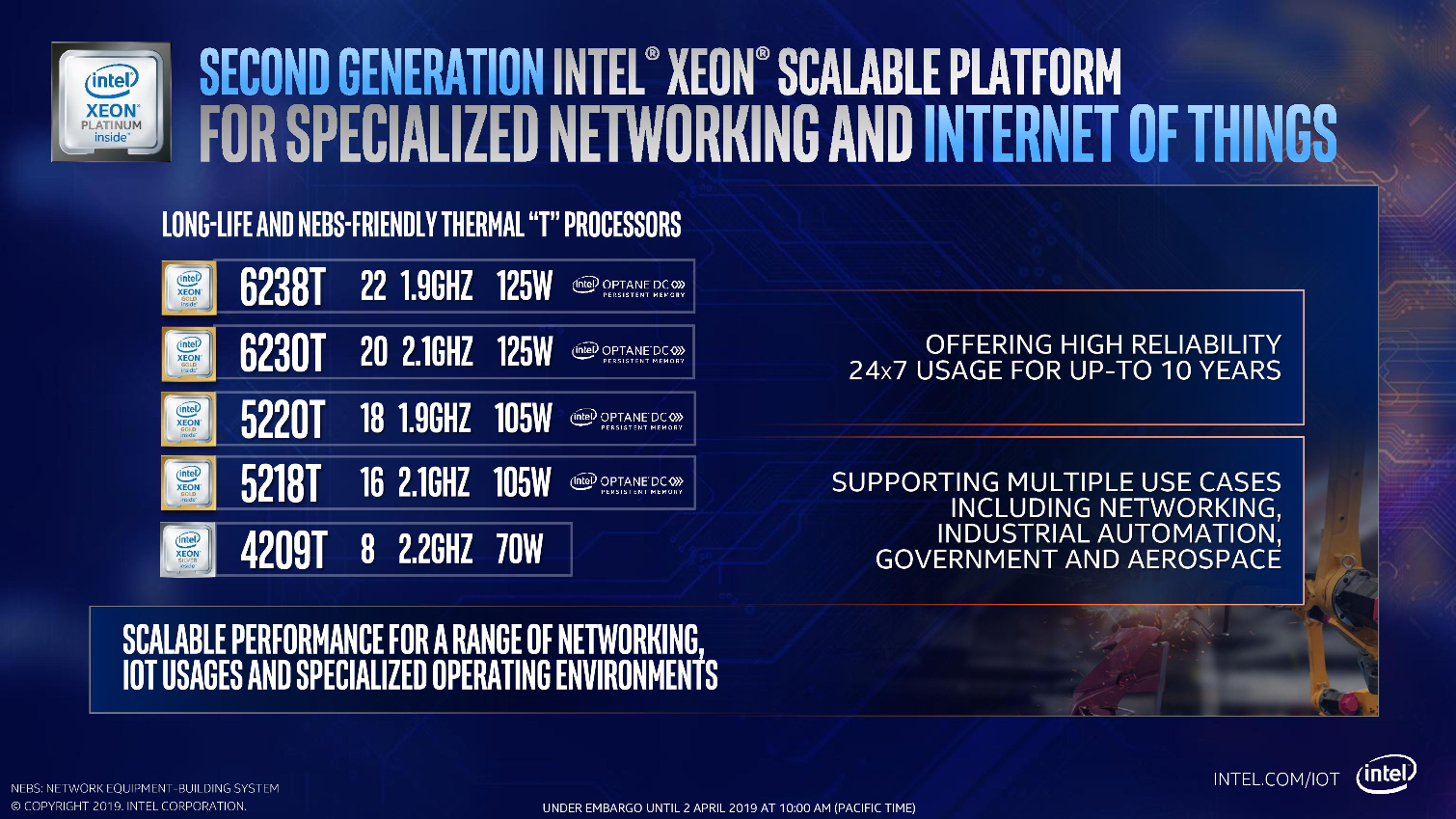


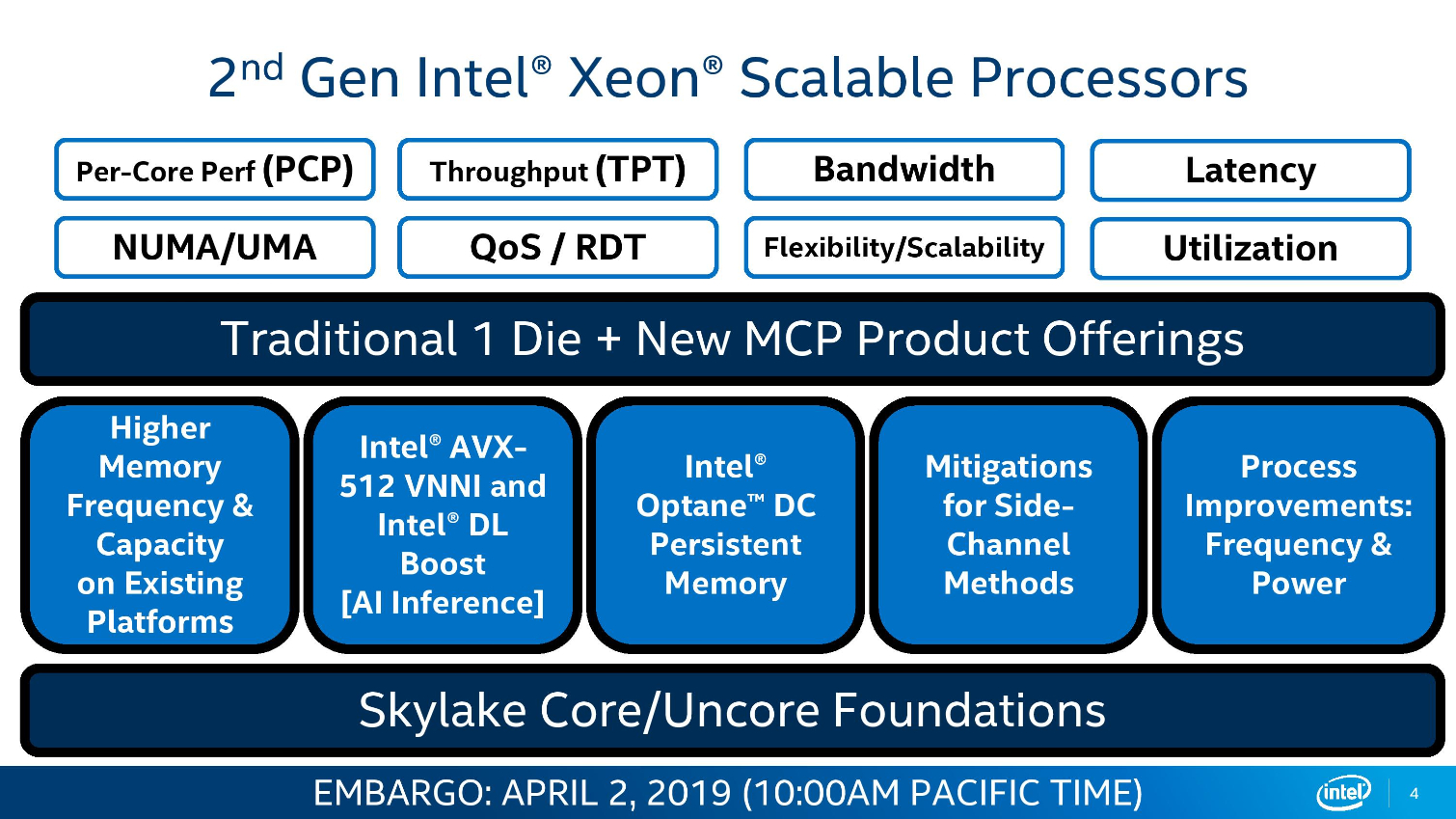


Intel also introduced several new types of workload-specialized processors that feature the company's Speed Select technology. These CPUs allow for finer-grained control, allowing you to assign certain cores to operate at a set frequency so that workloads targeted at those cores (through affinity manipulations) experience a better overall quality of service, boosting performance. Networking-optimized SKUs also forgo Turbo Boost entirely to eliminate sporadic bursts that introduce inconsistency.
- L- Large DDR Memory Support (up to 4.5TB)
- M- Medium DDR Memory Support (up to 2TB)
- N- Networking/Network Function Virtualization
- S- Search
- T- Thermal
- V- VM Density Value
- Y- Intel Speed Select Technology
Intel also developed new search-optimized variants for cloud-based applications, along with models designed to offer the utmost in virtual machine density through targeted manipulations of Turbo Boost bins.
This is one of the most complex product stacks we've ever seen, carved up by core count, base frequencies, PCIe connectivity, memory capacity/data rates, AVX-512 functionality, Hyper-Threading, UPI connections, and FMA units per core. Intel also excises Optane Persistent DIMM support on some of its Bronze models.
Get Tom's Hardware's best news and in-depth reviews, straight to your inbox.
Notice that there is no pricing for the exotic 56-core models. That's because they're only offered in OEM systems. The flagship Xeon Platinum 8280 sells for $10,009 per chip, while the lowest-end Platinum 8253 dips down to $3,115. Intel's Gold family spans from $1,221 to $3,984 for the networking-optimized variant. Meanwhile, the Silver line-up spans from $417 to $1,002.
Intel's M- and L-series processors are only available in seven models (green boxes in the image above). They accommodate much higher memory capacity for both DRAM and Optane DC Persistent Memory DIMMs. Intel hasn't officially released pricing for them, though we hear the flagship 8280L has a staggering $17,900 price point.
At this time, there are no updates to the F-series chips with OmniPath connectors baked right into their silicon. Intel tells us that these products are in the works, but it doesn't have a release date yet.
AVX/AVX2/AVX-512 Turbo Boost Frequency Tables
We don't have the AVX/AVX2/AVX-512 Turbo Boost tables for Intel's new 9000-series chips. However, the company does share the 8000-series' specifications:
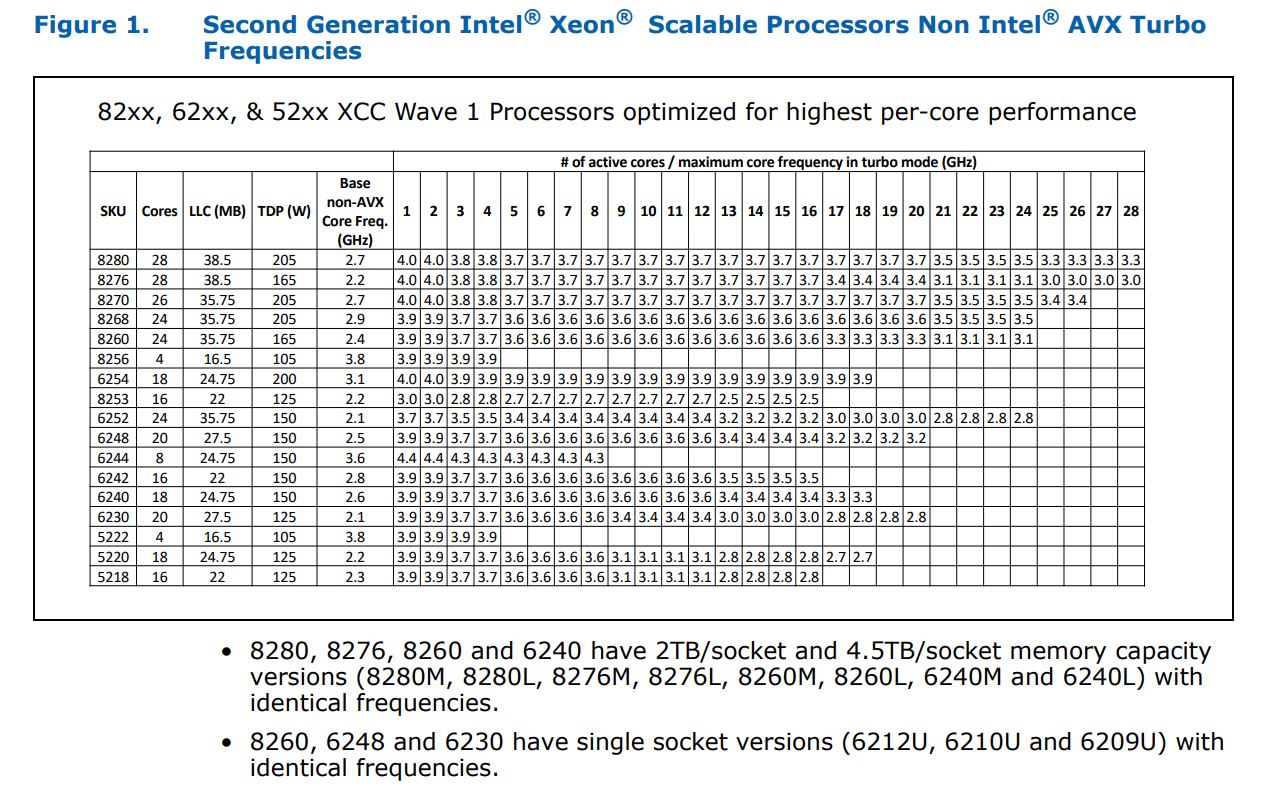
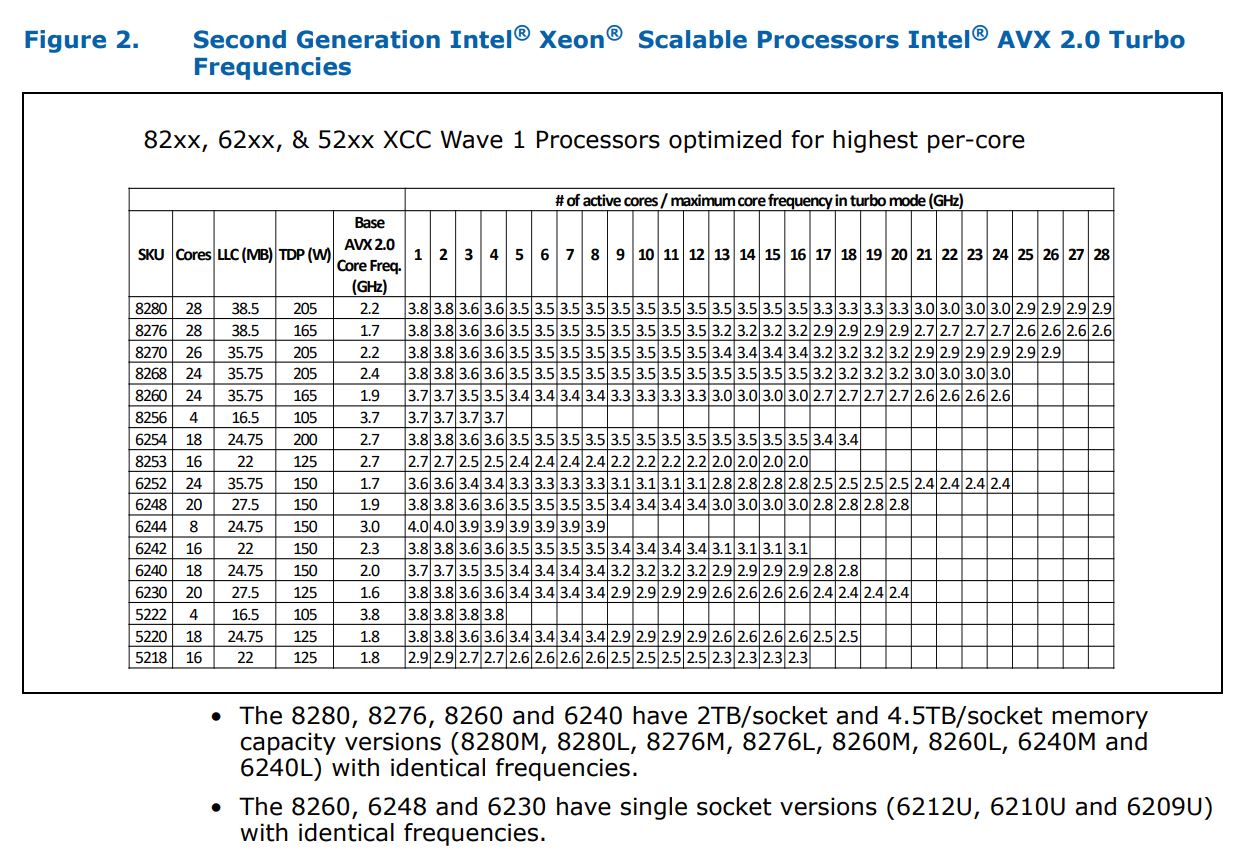
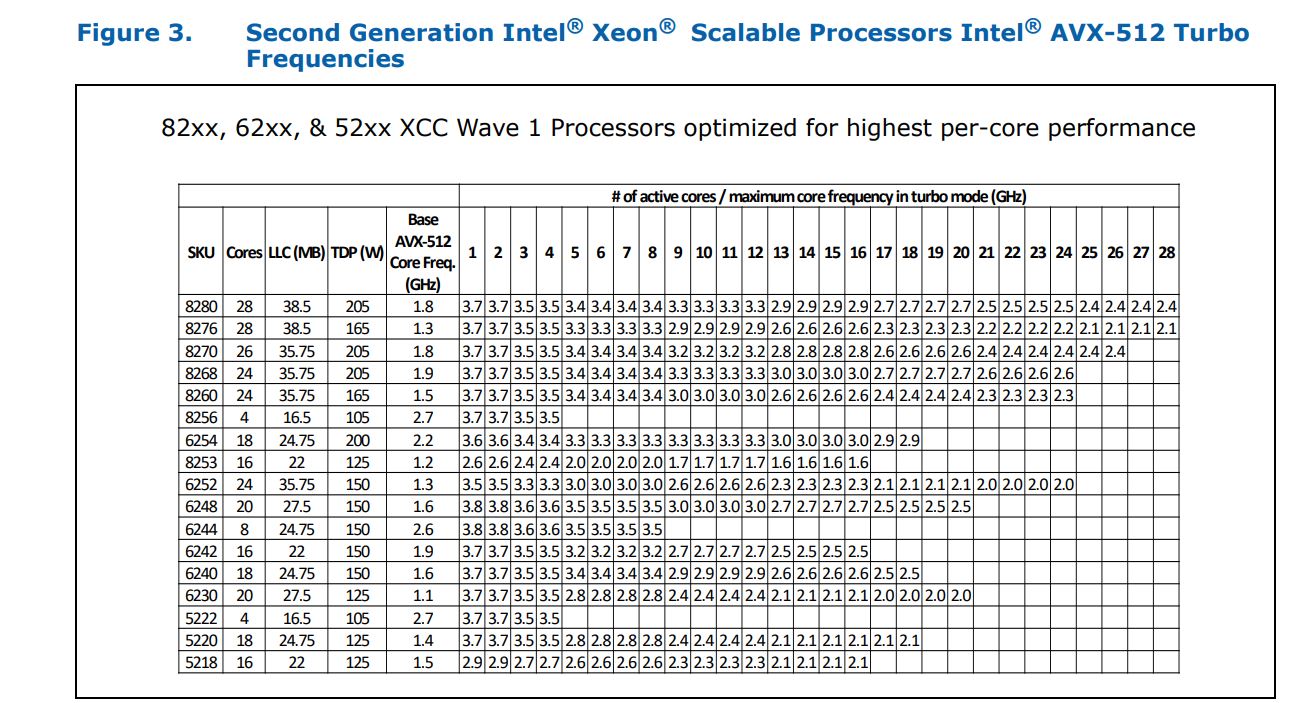
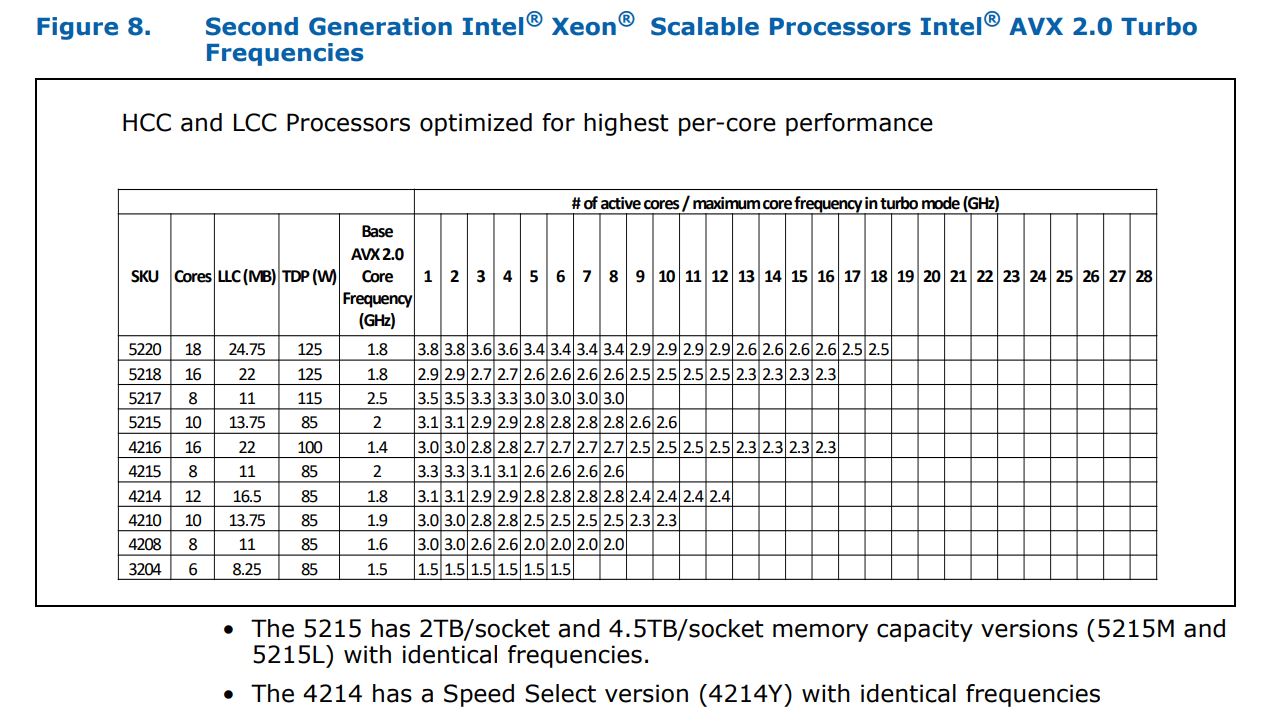
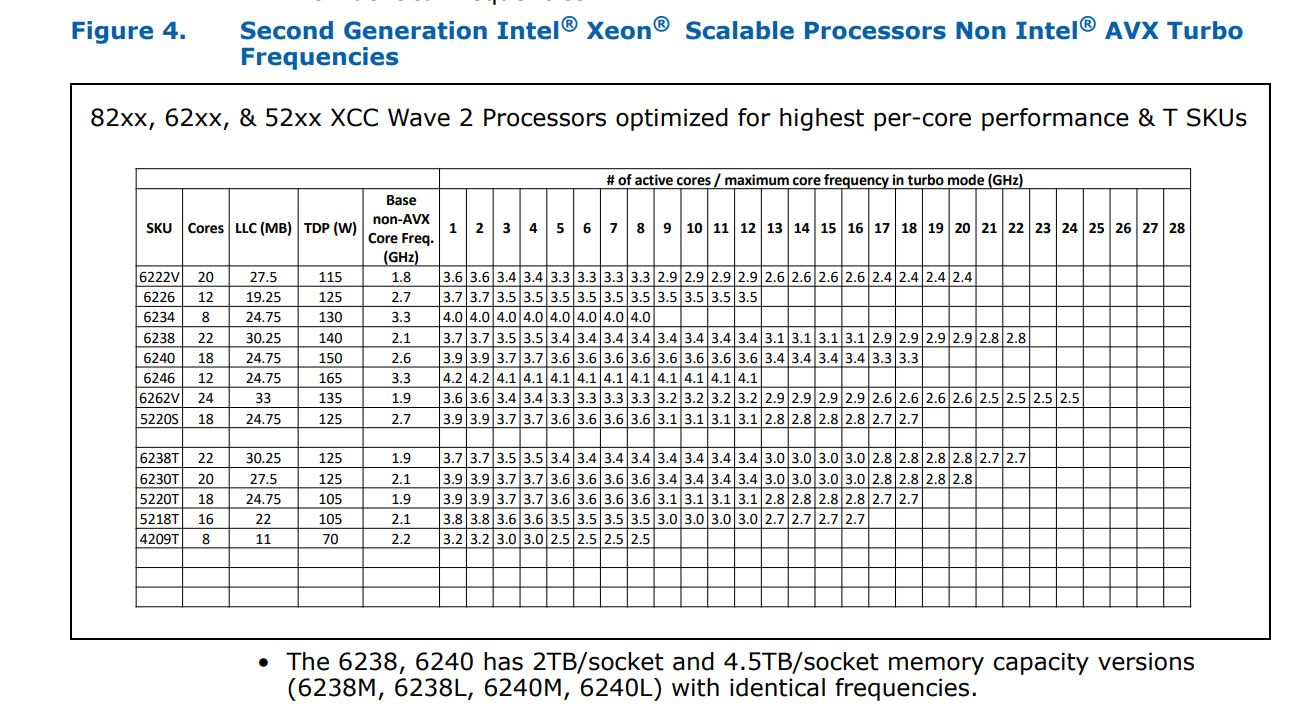
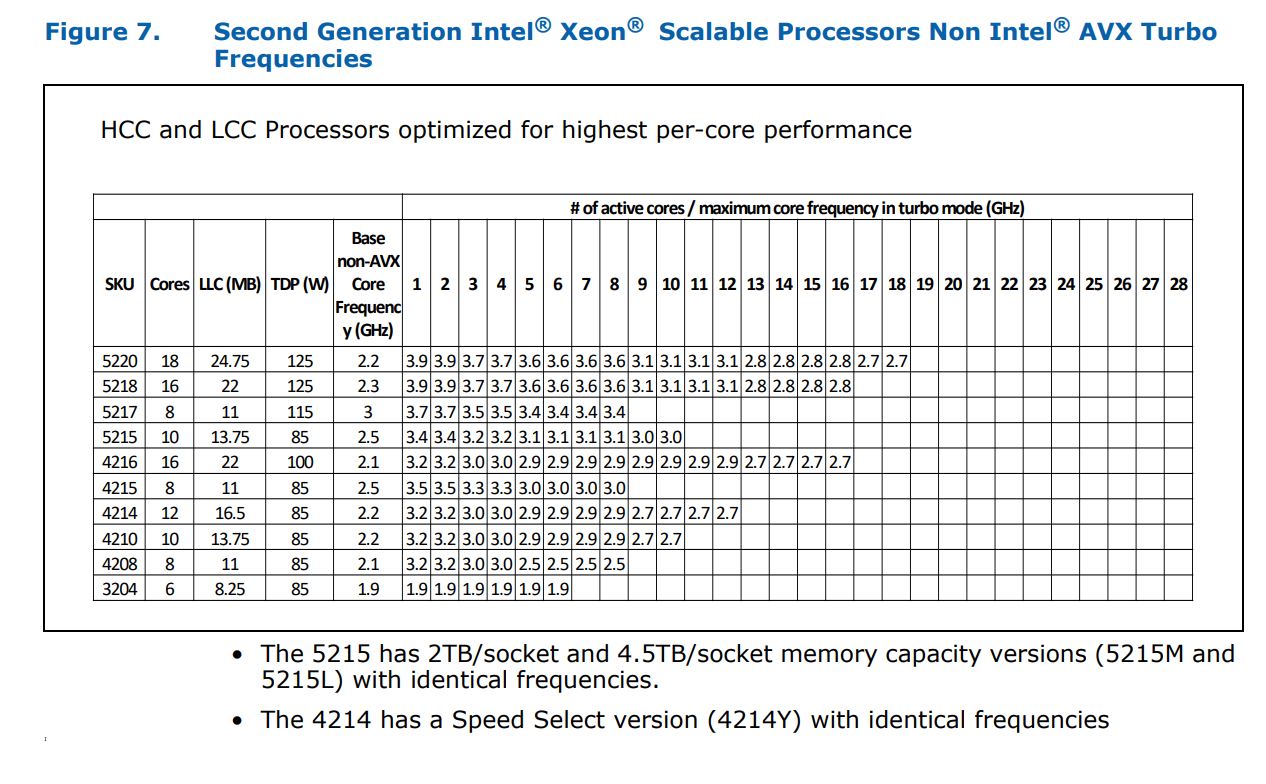

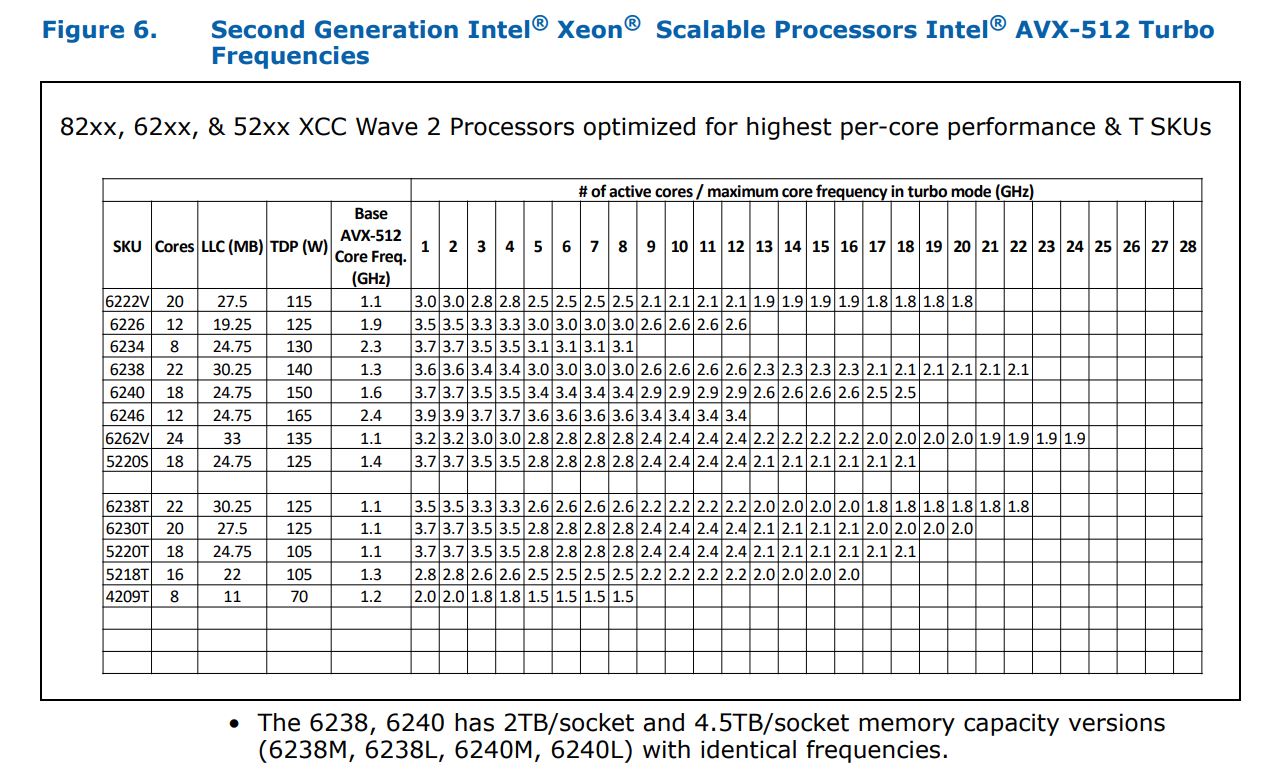

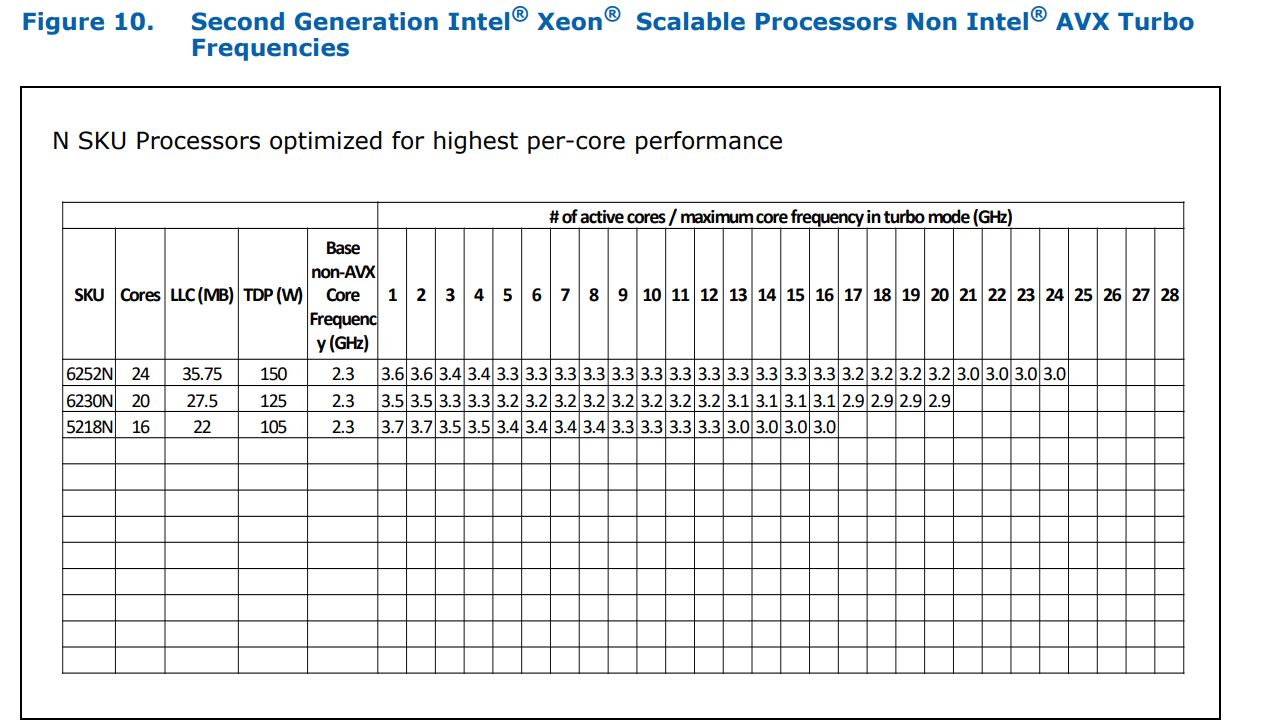
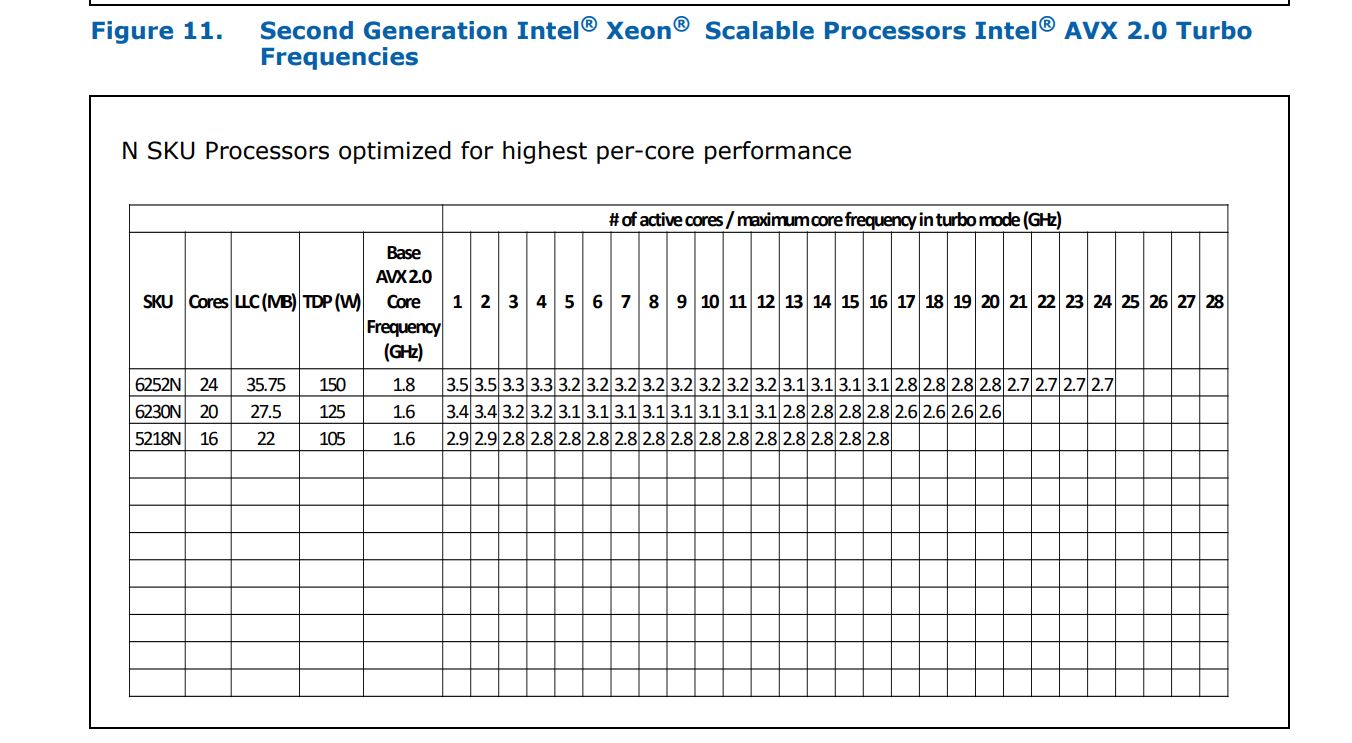
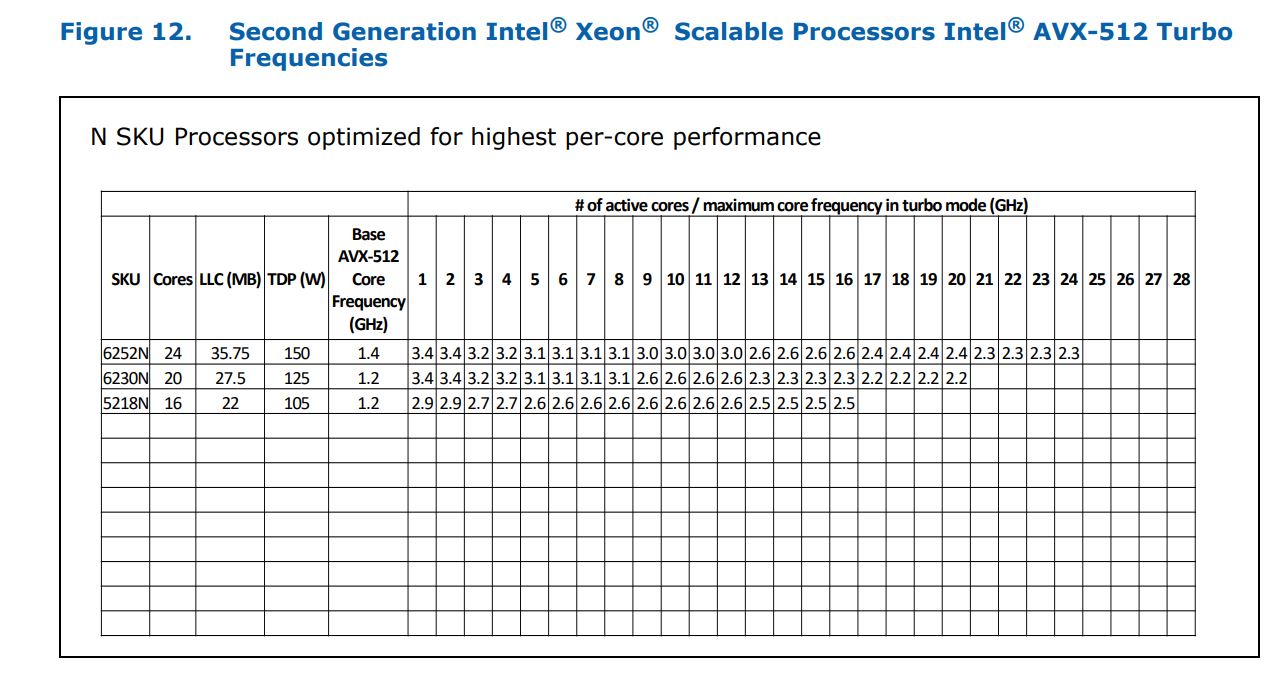
Intel is rolling out U-series CPUs to address AMD's P-series chips in the single-socket server space. The 6212U, 6210U, and 6209U share the same frequencies as the 8260, 6248, and 6230, so Intel doesn't bother listing those models in its detailed per-core Turbo Boost break-down.
As we've seen from Intel's newest desktop processors, comparing the second-gen Xeon Turbo Boost frequencies to the first-gen models (PDF) reveals a tangible increase in multi-core clock rates, yielding higher performance in real-world applications. Intel also adds more cores to several of its most recent SKUs, without increasing their prices.
Densely-packed AVX instructions augment performance in properly-tuned workloads at the expense of higher power consumption and thermal load. So, Intel's CPUs drop to lower frequencies (~600 to 900 MHz) during AVX-, AVX2-, and AVX-512-optimized workloads.
MORE: Best CPUs
MORE: Intel & AMD Processor Hierarchy
MORE: All CPUs Content
Current page: Silicon Mitigations, Product Stack and Turbo Boost Frequencies
Prev Page Second Generation Intel Xeon Scalable Next Page Test Platforms and How We Test
Paul Alcorn is the Editor-in-Chief for Tom's Hardware US. He also writes news and reviews on CPUs, storage, and enterprise hardware.
-
Murissokah In the first page there's a paragraph stating "Like the previous-gen Xeon Scalable processors, Intel's Cascade Lake models drop into an LGA 4637 interface (Socket P) on platforms with C610 (Lewisburg) platform controller hubs, and the processors are compatible with existing server boards."Reply
Wouldn't that be LGA 3647? And shouldn't it read C620-famliy chipset for Lewisburg? -
JamesSneed It just hit me how big of a deal EPYC will be. AMD is already pulling lower power numbers with the 32 core 7601 however AMD will have a 64 core version with Zen2 and has stated the power draw will be about the same. If the power draw is truly is the same, AMD's 64 core Zen2 parts will be pulling less power than Intel's 28 core 8280. That is rather insane.Reply -
Amdlova lol 16x16gb 2666 for amdReply
8x32gb intel 2400
12x32gb intel 2933
How To incrase power compsumation to another level. add another 30w in memory for the amd server and its done. -
Mpablo87 The promise or realityReply
Cascade Lake Xeons employ the same microarchitectur as their predecessors, but, we can hope, it is promising!) -
The Doodle Slight problem this author fails to tell you in this article and that's OEM's can only buy the Platinum 9000 processor pre-mounted on Intel's motherboards. That's correct. None of the OEM's are likely to ship a solution based on this beast because of this fact. So at best you will be able to buy it from an Intel reseller. So forget seeing it from Dell, HPE, Lenovo, Supermico and others. your in white box territory.Reply
Besides, why would they? A 64C 225W AMD Rome will run rings around this space heater and cost a whole lot less.
